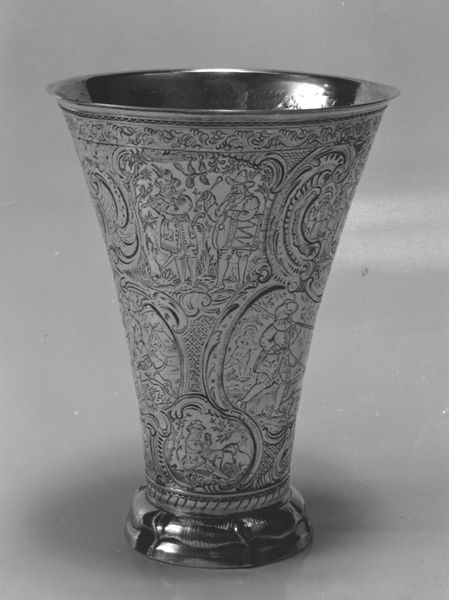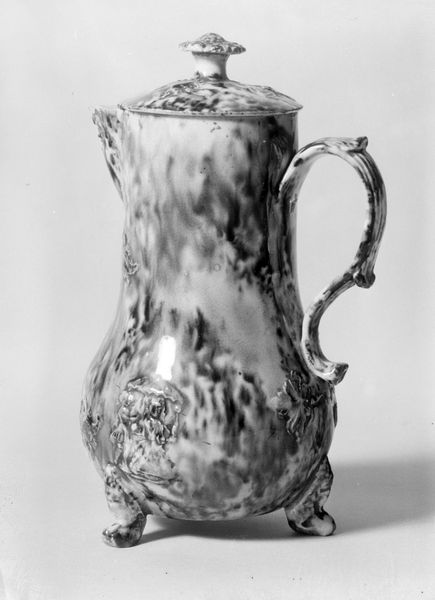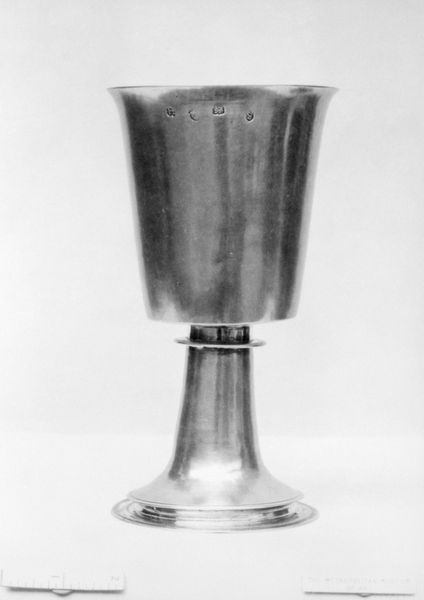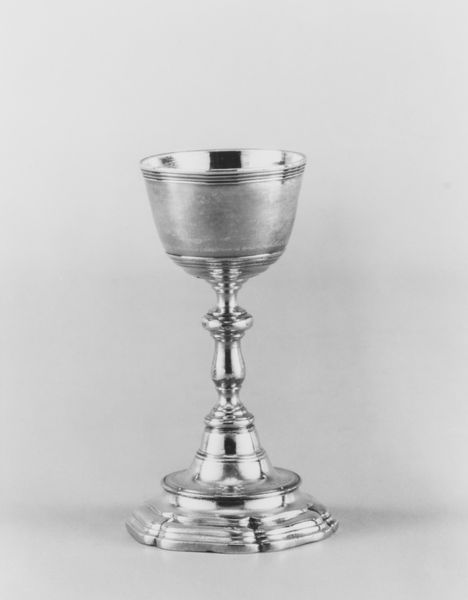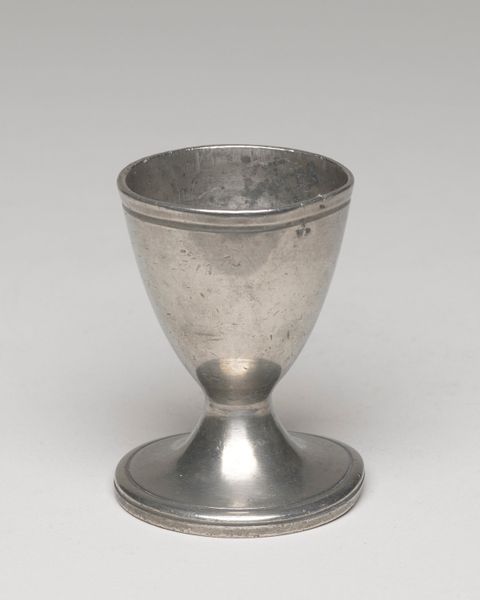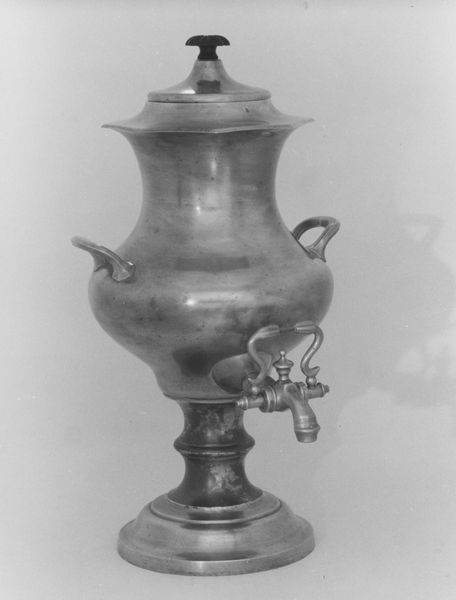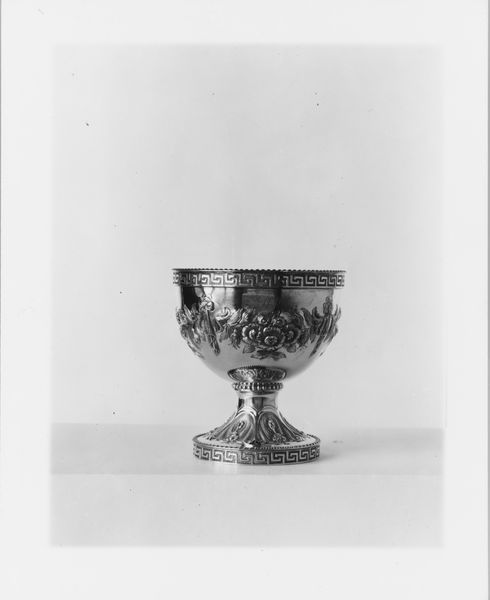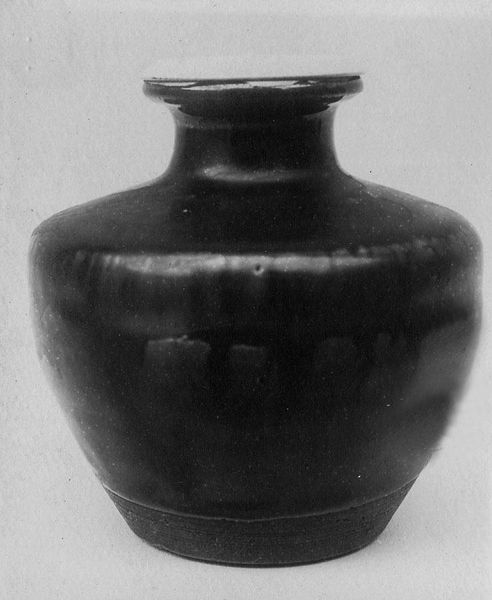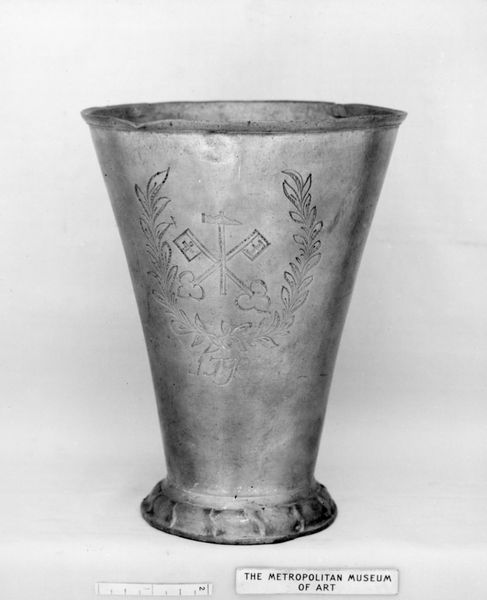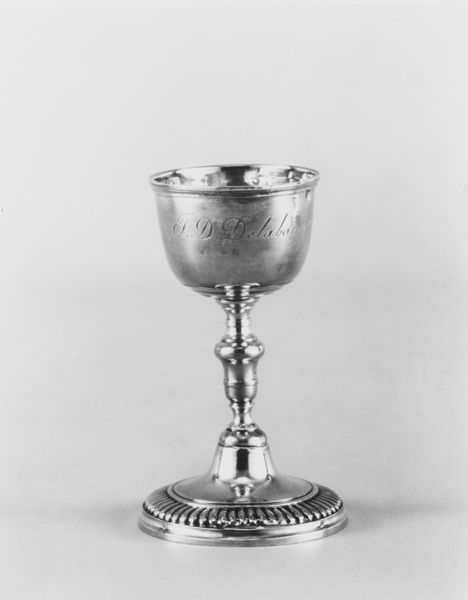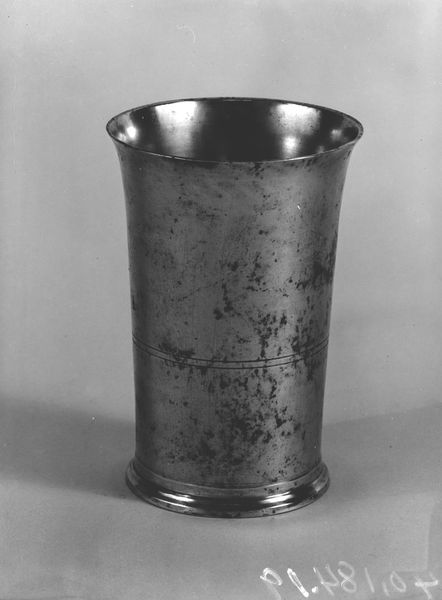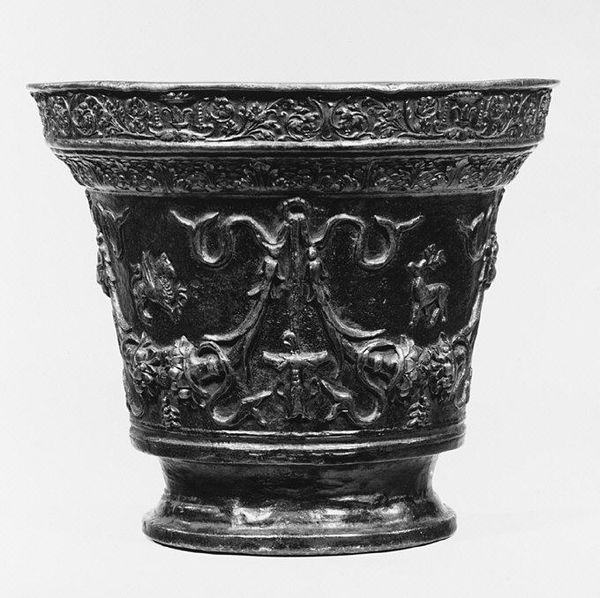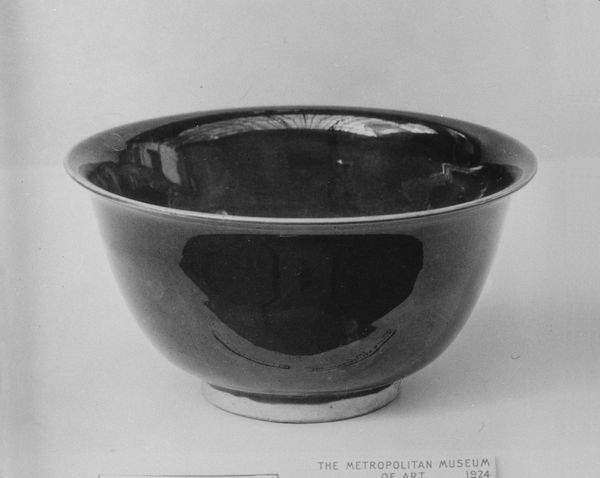
metal, photography, sculpture
#
metal
#
sculptural image
#
photography
#
stoneware
#
wash background
#
sculpture
#
black and white
#
united-states
Dimensions: H. 5 3/4 in. (14.6 cm)
Copyright: Public Domain
Editor: Here we have a photograph of a metal chalice, likely made of pewter or a similar alloy, crafted sometime between 1810 and 1856 by Israel Trask. The stark, monochrome image really highlights the simple elegance of the form. What can you tell me about this piece? Curator: It’s a fascinating example of early American craftsmanship. What strikes me is the seemingly unadorned nature of the chalice. Consider the labor involved: the mining of the metal ore, the smelting, the shaping… Do you see evidence of tooling marks? These are not imperfections but a record of the maker’s process. Editor: I do see some marks, especially on the cup portion. Were these chalices common? Curator: Such chalices represent more than just utilitarian objects; they are evidence of a specific means of production. Was this made using industrial methods or by an artisan? Understanding this provides insight into the social context of its creation and potential use. Editor: I see what you mean. So, looking at the metal and the way it’s worked gives us clues about society and production at that time? Curator: Exactly. We need to consider where the materials came from. Was Trask part of a larger system of production and trade? His signature or hallmark (if it were visible) can shed light. Did local traditions inform this object's materiality? It challenges this idea of “high” versus “low” art. Editor: That’s interesting. I was initially focused on the religious implications of a chalice, but I can see how the materiality and means of production offer a much broader perspective. Curator: Indeed. Focusing on materials, labor, and consumption allows us to unearth deeper insights. Every mark on that metal surface carries a silent story about American ingenuity and societal shifts. Editor: Thank you for expanding my view on this chalice. I definitely have a better appreciation for considering how its production tells us about its time. Curator: My pleasure. I am leaving with food for thought myself.
Comments
No comments
Be the first to comment and join the conversation on the ultimate creative platform.
